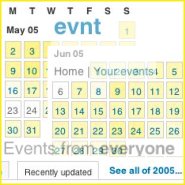

 subscribe
subscribe |
||
 |
> - - - - - - - - < |
 |
A collaborative text written by Marc Garrett and Ruth Catlow, for "Media Mutandis: A Node.London Reader" (to be published in February 2006)
There is a Sufi fable in which a group of foreigners sit at breakfast, excitedly discussing their previous night’s exploration. One starts saying “…and what about that great beast we came across in the darkest part of the Jungle? It was like a massive, rough wall.†The others look perplexed. “No it wasn’t!†says one, “It was some kind of pythonâ€. “Yeah…†another half-agrees, “…but it also had powerful wingsâ€. The shortest of the group looks bemused- “well it felt like a tree trunk to me.â€
This fable aptly illustrates many aspects of the NODE.London experience. The name, which stands for Networked Open Distributed Events in London [1], indicates the open, lateral structure adopted to develop a season of media arts. It is intentionally extensible, suggesting possible future NODE(s).Rio, .Moscow, .Mumbai etc. As participants/instigators in the project’s ongoing conceptualization and praxis, we are just two individuals positioned on the interlaced, scale-free networks of NODE.L (more on these later). As such, our descriptions of this collectively authored project are inevitably incomplete and contestable, with a complete picture emerging only in negotiation with others.
At time of writing we are between the two key milestone events of NODE.L: October’s ‘Open Season’ of conferences (with its focus on media activism) and the Season of Media Arts, planned for March 2006 (which will feature distributed media arts projects, exhibitions and events). Through these events NODE.L offers a rare chance to identify shared purposes, philosophies, resources (such as licenses and tools for knowledge sharing) and common vocabularies between the media arts and tech-orientated, media activist communities.
I attended a workshop loosely based around the EVNT software project but billed as bringing together producers of events and coders of event software to meet each other and “brainstorm the future of event organisation (with an emphasis on the arts), calendaring tools and technologies.â€
 |
I wouldn’t really describe myself as belonging to either of those groups but I was very glad I was along for the ride. The introduction to why we were all there generally and specifically as individuals was really interesting. It became clear that although there was a good deal of common ground among us we had such diverse motivations that distinctions like coders and producers weren’t that meaningful. |